Best Of Winners are not short of ideas to share their passion for their unique environment to the local community. At Château Boutinet (2025 Best Of Winner for Sustainable Wine Practices) near Fronsac, Nathalie and Jerome Escuredo, raise a flock of Southdown sheep helped by their faithful sheep dog Jeriko. The sheep graze amongst the vines in winter and on their wildflower strewn pastureland in the summer. Nathalie shares this family passion, taking visitors on hikes to connect with the preserved ecosystem of the surrounding countryside. She has the wellness of her guests at heart, sharing her passion for yoga with classes in the yurt and is studying medicinal plants to best use the natural resources that surround them.
At Château Couhins (2025 Best Of Winner for Sustainable Wine Practices), agricultural manager Jérôme Miramon introduced an original polyculture project, planting saffron bulbs amongst the vines. The life cycle of these purple flowers perfectly complements the vines. They die down in spring when the vine awakens, leaves of the plant help keep the weeds at bay and the flowers are picked after the grape harvest. Guests are invited to help pick the stamens of these purple flowers, and then taste the wines of the property with dishes prepared with the spice. An original experience right on the edge of Bordeaux city for locals and tourists alike.
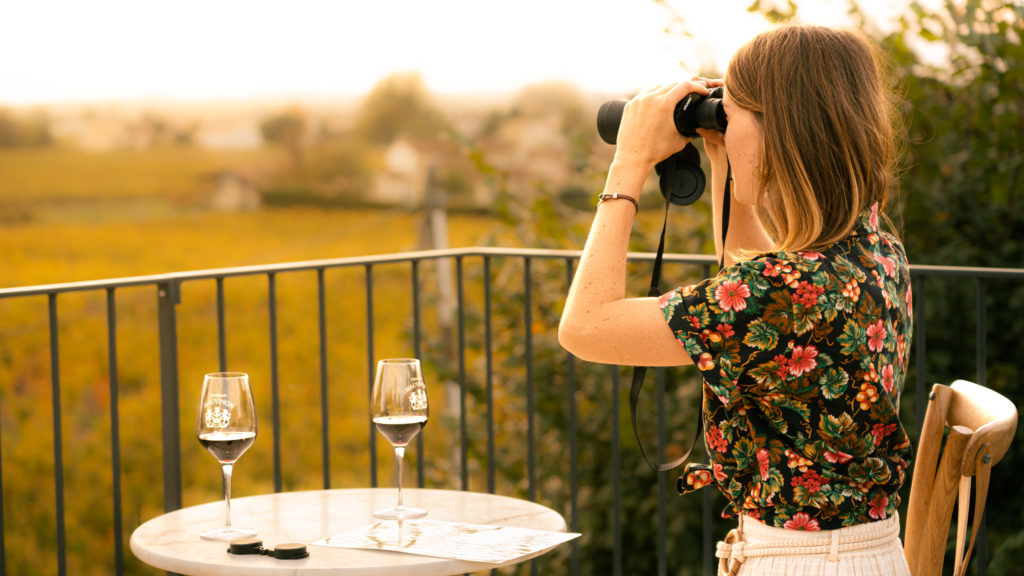
Family owned and run Château Mauvinon (2024 Best Of Winner for Sustainable Wine Tourism Practices), in Saint Emilion also has an original way to share their passion for the environment. They have named the terrace above their tasting room ‘Le Nichoir’ or nesting box, as it is the perfect place to observe the local bird life encouraged by their organic and biodynamic practices
Sustainable challenges
Rising to the challenges of sustainability and understanding how to communicate these initiatives to the public isn’t easy, but help is at hand. Since 2011, a Bordeaux based non-profit HISA (Human InitiativeS for Animals), has been working with wineries to improve and protect their own vineyards whilst building awareness of the fragility of our shared natural environment.
Resilience
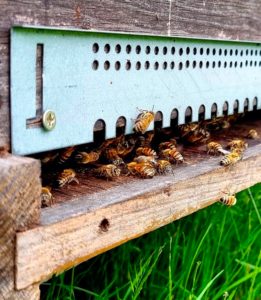
Their ‘Projet Résilience’ helps vineyards integrate biodiversity into their viticultural practices, involving local populations and organisations. With volunteer producers, they audit existing wildlife creating a tailored plan that encourages wild species, including pollinating insects, bats, birds and even small mammals.
Tools
HISA helps vineyards to plant trees and hedgerows that create cooler micro climates, fix carbon and offer homes to birds, bees and more. They preserve and create wetlands, also contributing to temperature regulation, water preservation and creating the perfect environment for amphibians and aquatic insects such as dragonflies.
Finally, they install bird boxes for swallows, other small birds, bats and more. These insect devouring species are very welcome amongst the vines, they eat damaging moths, reducing the need for insecticides and pesticides. It’s a win-win for the environment at large and the vineyards in particular.
Breaking down barriers
HISA‘s expertise includes identifying and sourcing indigenous plant material as well as dealing with admin and permits of behalf of wineries. Part of their philosophy, is engaging with the local community, working with local schools and residents to share the concepts behind these installations and create awareness around the fragility of the natural environment in which they all live and work. Sharing these mutually beneficial activities breaks down barriers between vineyards and the local population.
Bordeaux Beginnings
This initiative started in Bordeaux but their vision is to reach across the vineyards of the whole region of Nouvelle-Aquitaine, and further to help combat climate change, and biodiversity loss. Bordeaux vineyards are signing up. `
Urban nature
Chateau Fayat in Pomerol is a 16 ha urban vineyard in the heart of the town of Libourne; it’s the ideal location to address both the environmental and social challenges of making wine surrounded by people.
HISA’s wildlife audit identified there eight species of bats, including in the attic of the château and several ‘vulnerable’ species of birds. With the Fayat team they decided to protect this natural environment by reducing monoculture, sacrificing a 0.5 hectar plot of vines as a haven for biodiversity, sourcing a diversity of local fruit species with the ‘Conservatoire Régional d’Aquitaine’ to plant an edible garden and orchard of local species. The team spent 4 days learning to prune fruit trees – not the same technique as vines! A pond will soon be laid out in an unused area instead of being planted with vines. Ecological corridors of indigenous species now run along the roads and railway tracks, increasing the attractivity for local residents as well as the local wildlife.
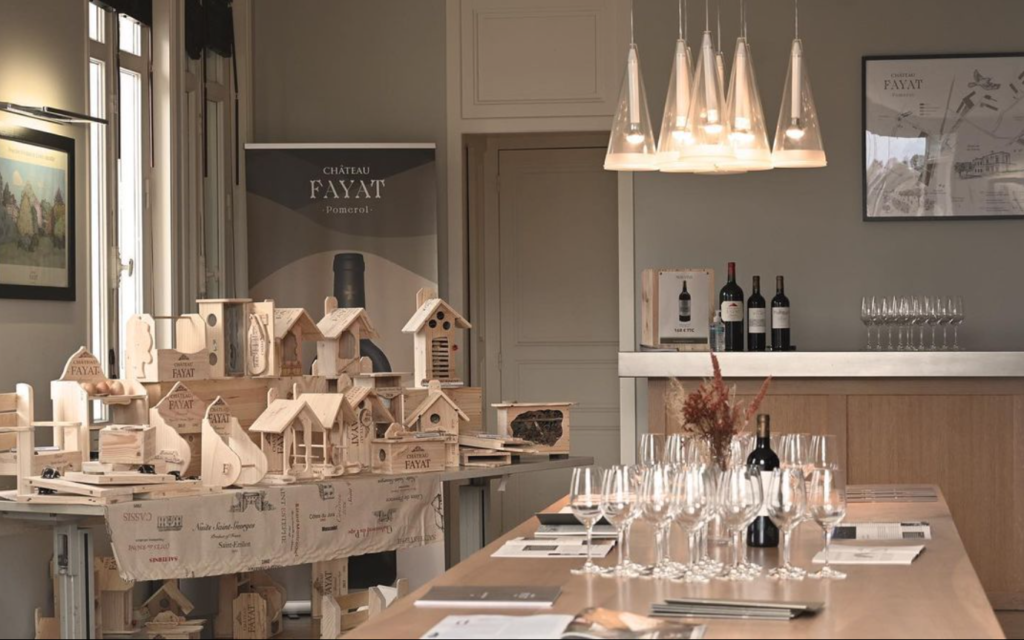
The proximity to the local population makes Château Fayat a perfect showcase for the initiative, enabling the team to communicate with and reassure the neighbours about their 100% organic agricultural treatments and frost prevention.
Creating a vision for the future
The programme also plays an educational role, welcoming school groups to the property to help children understand the fragility of their environment and the role they can all play in protecting it. Events include treasure hunts in the vines, art workshops, wild seed bombs and even building nesting boxes for birds.
They are not alone in wanting to create closer links with the local community. Château Fayat has joined town of Libourne and neighbouring Château Quinault l’Enclos and Château Mazeyres in creating a round table to answer questions and explain environmental responsible viticulture they practice.
Nearby, the Entre deux Mers is one of the most biodiverse regions of Bordeaux, with 94% of vineyards under environmental certification. Here, HISA worked with the town hall of Saint-Germain-du-Puch and the village school children to create a communal orchard. Putting children in touch with the nature that surrounds them, sharing the importance of the local fauna in maintaining a its balance and encouraging them to record the local wild life found there.
Eco tourism
Education isn’t only for children: in the same village, organic vineyard Château Lestrille (2023 Best Of Wine Tourism) worked with HISA to encourage local wildlife on this family vineyard. They planted hedges and 300 local plants in a mini Miawaki forest, created a pond and sowed wild flower seeds on fallow land to attract pollinators (Lestrille is certified Bee Friendly). The wine labels reflect this philosophy, featuring insects, birds and plants from the vines. It works. On her early morning walks to inspect the vines, owner and winemaker Estelle Roumage often come across, deers hares, hedgehogs and the occasional wild boar.
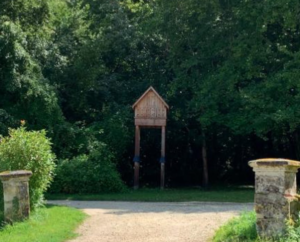
Nearby, Château Bellefontaine, is one of the original HISA projects in Bordeaux, the ruined château is being renovated to welcome guests where the surrounding preserved woodland will be a major attraction thanks to the audit carried out by HISA. Together they built and tested a ‘swallow hotel’ to protect the local fragile barn swallow population.
In the Médoc, Barton Family Wines is supporting the HISA Martinet & Hirondelle project. This protects swallows and swifts threatened by the disappearance of their nesting sites and the insects they rely on for food. The Médoc, with its many water features, is the perfect environment for them. Together they are creating and restoring ecological corridors of hedges, lakes and flowering meadows and installing nesting boxes specifically adapted to these species across several properties.
Out to Africa
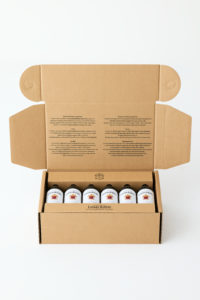
Part of this funding has come from an ecological innovation at Chateau Langoa Barton. Since the 2021 vintage, bottles from the property are shipped in 100% French cardboard cartons, reducing six-fold the carbon footprint of shipping. Wooden cases are still available upon request, but at a premium. A premium that is donated to two environmental charities HISA and Wild Tomorrow. These two organisations converge in Africa, where they both work to protect, restore and re-wild land in strategic, ecologically important areas and where HISA also works with local populations to encourage this symbiosis between man and nature.
From Bordeaux to Africa, biodiversity is an international priority that both vineyards and their neighbours can get behind.
Author : Wendy Narby - Insider Tasting Photo credits : © Château Boutinet / © Château Mauvinon / © Château de Reignac / © Château Fayat / © Château Bellefontaine / © Château Langoa Barton